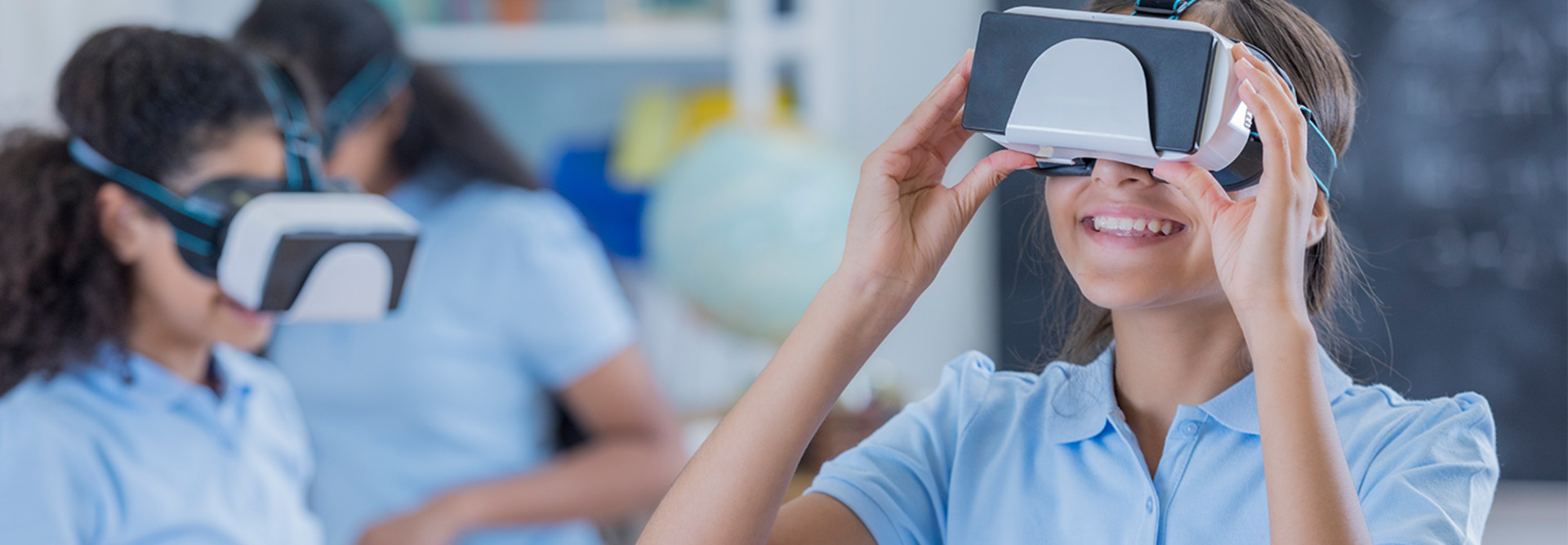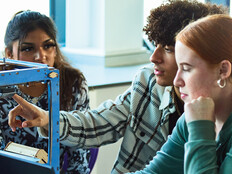AR/VR in K–12: Schools Use Immersive Technology for Assistive Learning
In K–12, assistive learning can be a tricky beast to tackle. Schools have a duty to attend to all students’ needs, but it can be difficult to create a curriculum that addresses every student, especially as an increasing number of schools experience overcrowding.
Technology helps educators give each student the attention he or she needs, through tools such as online learning modules, personal tablets and, now, virtual and augmented reality.
Experts have found virtual environments can give students who require extra assistance the opportunities to build the skills they need to be as successful in the classroom as their peers.
“It’s being used … to work with students on joint attention skills, sensory-based experiences, exposure therapy to reduce anxiety, social stories, community-based instruction, social skills, executive functioning, daily and independent living skills, safety awareness, and social modeling,” said Jaclyn Wickham, founder of AcclimateVR, in a presentation hosted by the Center on Technology and Disability.
MORE FROM EDTECH: Check out how virtual and augmented reality has matured in the K–12 classroom.
Virtual and Augmented Reality Help Students Focus
One of the major benefits of virtual and augmented reality in the classroom is that not only are students immersed in their work, but also they can block out other classroom distractions.
Attention deficit disorder is a rising issue among K–12 schools. According to the Centers for Disease Control and Prevention’s most recent findings, 5.7 million children are diagnosed with attention deficit disorder or attention deficit hyperactivity disorder, and the rate of diagnoses has continued to rise over the past decade.
With virtual reality headsets, students are forced to interact with their studies by excluding all else, making the technology ideal for educators who work with kids who have varying levels of ADD/ADHD.
“Additionally, attention spans of children born in the age of digital technology are decreasing rapidly. The brains of young children are constantly exposed to stimulation due to smartphones, social media, and the internet,” notes BBN Times contributor Naveen Joshi, founder and CEO of software company Allerin. “The introduction of augmented reality and virtual reality in education can prove to be a feasible solution for all these problems. AR and VR technology can make lectures and books more immersive and interactive, which can reduce distraction.”
Companies such as Microsoft have developed tools for using their virtual reality headsets in just this way. In January 2019, Microsoft announced that its Immersive Reader product would be available as a virtual application, letting students practice their reading in a focused, virtual space.
Immersive Learning Technology Helps Students Practice Soft Skills
Soft skills, such as collaboration, team work and problem-solving, have become a primary focus for K–12 classrooms as companies express a need for these abilities in future employees.
For students who struggle with these areas, virtual reality modules can be a great place for them to practice.
At the end of 2018, the U.S. Department of Education’s Office of Special Education Programs invested $2.5 million into developing programs for students to work on the social skills necessary to succeed in the classroom, and in their future careers.
The project, called Virtual reality Opportunities to Integrate Social Skills (VOISS) created a series of virtual situations for students with high-functioning autism to learn how to work, talk and collaborate with their peers in various school settings, giving students the freedom to evolve their soft skills in a safe environment.
“Once the user puts on the [virtual reality head set, they] will be able to walk around the various environments exploring different situations,” Sean Smith, professor of special education and co-principal investigator of the project, told Variety. “The user will be able to walk up and interact with computer-driven avatars. This interaction will allow the user to understand consequences or positive or negative interactions. For instance, if the user is constantly looking down, the avatars may cut the conversation short and walk away. However, if the user makes eye contact, then the avatar will respond positively by smiling and conversing with the user.”
MORE FROM EDTECH: See how K–12 classrooms use virtual and augmented reality to teach coding.
VR in the Classroom Allows All Students the Opportunity to Explore
When virtual reality tools were first introduced into the classroom, the technology was marketed as a way to go beyond the walls of a school and take students places they would otherwise not be able to go.
While K–12 educators have since expanded their use of the technology, this is still a major draw, especially with students who may need to stay on school grounds.
At the 53rd St. School in Milwaukee, special needs educator Megan Rierdon could not take her students on field trips with the rest of the school. However, using VR headsets, she was able to give her students the same experiences their peers were having, according to eLearning Inside.
“The kids sat down in a chair, put on a virtual reality headpiece and saw a tour walking around an entire greenhouse.” Rierdon said. “Virtual reality is a really great opportunity for kids to travel and experience things that they otherwise wouldn’t have.”
K–12 schools should be a place for all students to have a rich, educational experience. Now, with the help of virtual reality headsets, the modern classroom can have a place for everyone.









